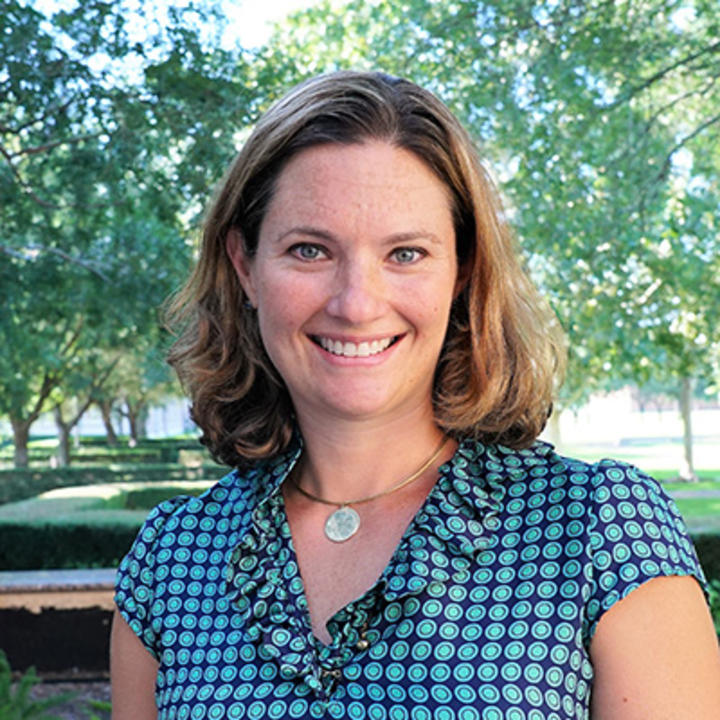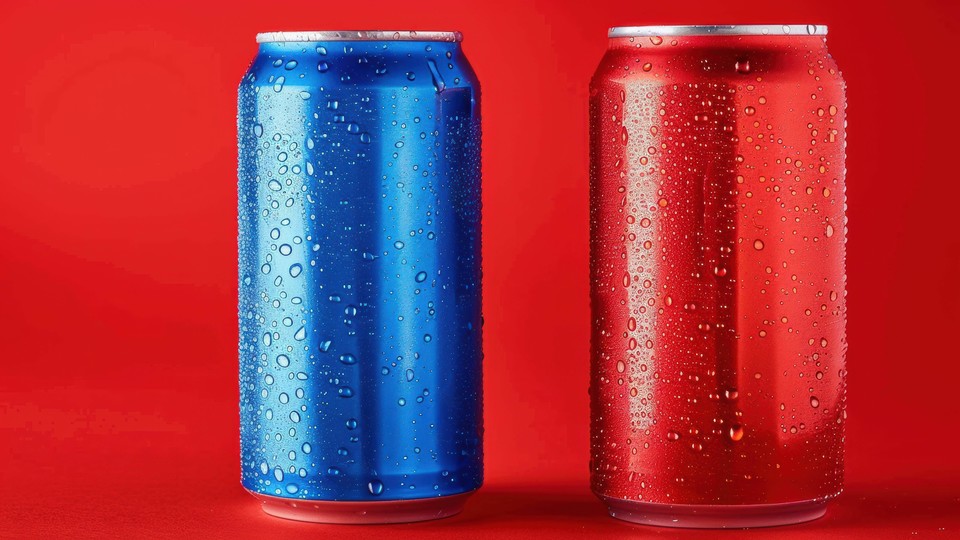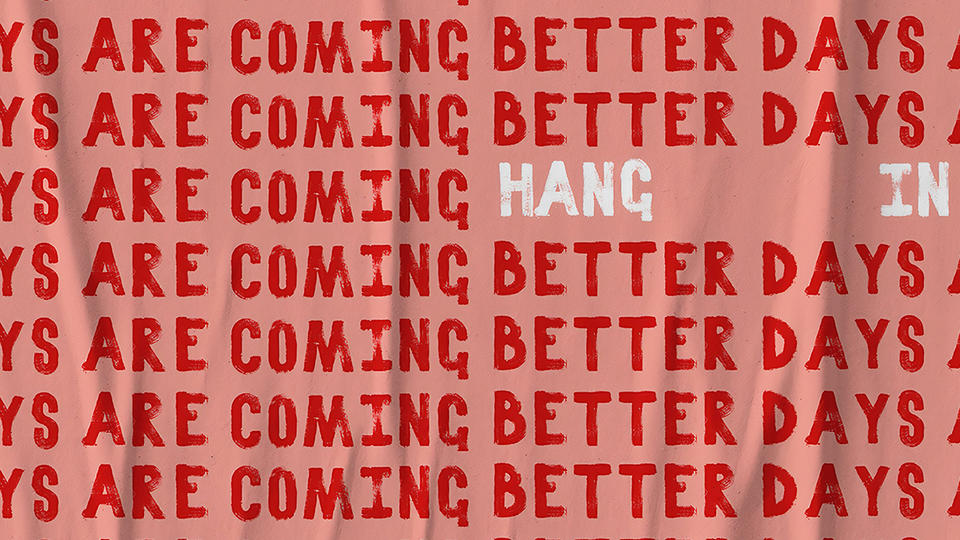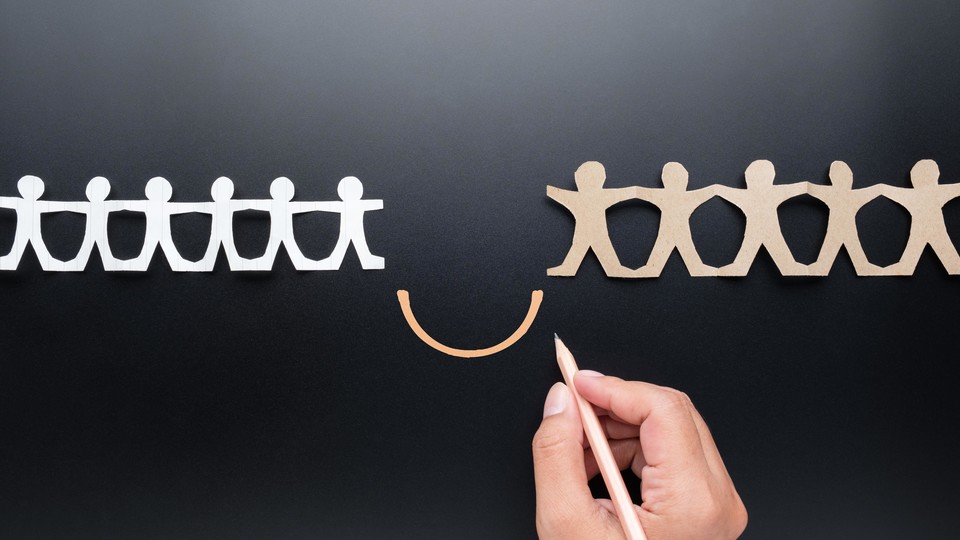Kirana stores are here to stay': FMCG strategy for Indian retail
How is the retail industry in emerging markets different from developed economies? Professor Siddharth Singh discusses insights from a recent analysis of FMCG marketing in India.
Listen: How should the Catholic Church address the sex abuse scandal?
Law enforcement officials recently raided the Archdiocese of Galveston-Houston for evidence on a Conroe priest accused of abuse. To understand why scandal persists and what should be done to fully address it, we talk to Anastasiya Zavyalova, assistant professor at Rice Business School who specializes in reputation management of organizations in crisis.
Lift your legacy: If she can do it, so can I with Pheramor CEO and co-founder Brittany Berreto and Rabbi Jacob Rupp
I think many people can be leaders but think that they’re not cut out for it because of their mental illness, upbringing, education or lifestyle. When I share my truth AND kick butt in the startup world, it has other people asking, “Well, heck why NOT me?! If she can do it, maybe I can too.”
The Power of a Yes-or-No Prompt
Want better results from your call to action? Give people a clear way to say no.
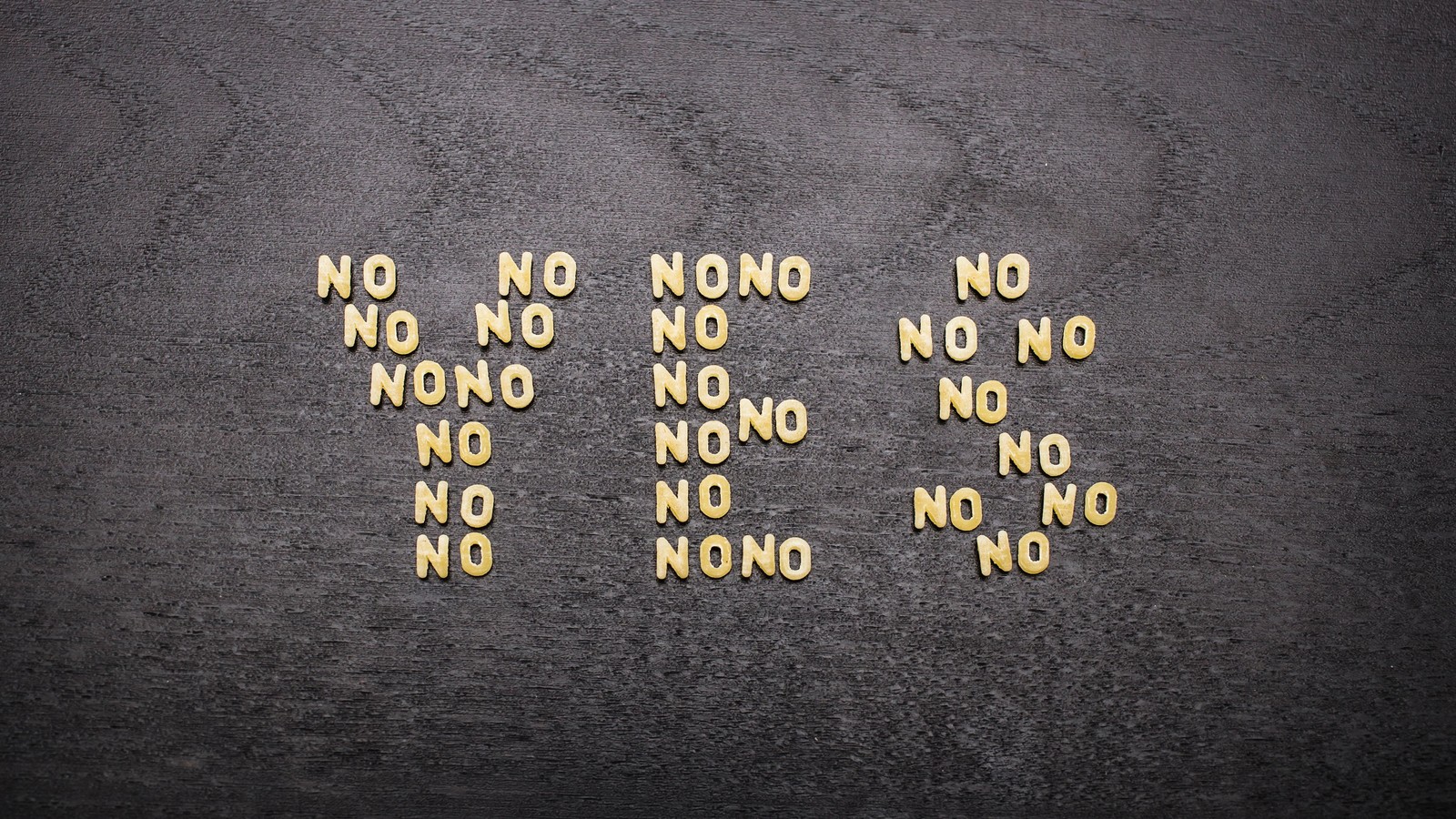
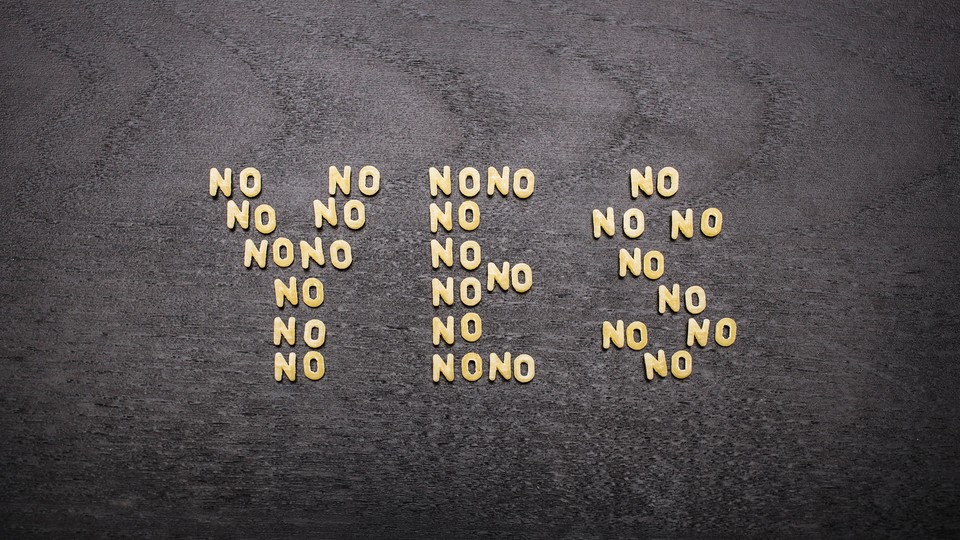
Based on research by Eleanor Putnam-Farr and Jason Riis
Using yes-or-no reply formats increased enrollment in employer-sponsored wellness programs, even when employees weren’t required to answer.
- How you frame a question affects how people reply.
- Using yes-or-no reply formats increased enrollment in employer-sponsored wellness programs, even when employees weren’t required to answer.
- Initial benefits from the yes-no enrollment question can carry through to program participation.
Imagine you’re perusing your favorite website, and you’re asked to join its mailing list: “Rice Business Wisdom’s monthly newsletter is filled with cutting-edge research that can help you succeed in work and life. Click here to subscribe.”
Did you click? No? Let’s try a different approach.
“Rice Business Wisdom’s monthly newsletter is filled with cutting-edge research that can help you succeed in work and life. Yes, I’d like to subscribe/No, I’m not interested.”
You have now entered the world of choice architecture, the science of framing questions to nudge people toward a desired outcome. It’s at work as companies encourage employees to participate in retirement plans, for example, and as marketers work to sell services, including online subscriptions.
Different ways of asking lead to different response rates. A non-forced choice means you can leave a screen without answering — and many do. A forced choice, like it sounds, requires an answer. Think about completing employer-required online sexual harassment training. You can’t move through the course until you answer each question.
An even more aggressive technique automatically chooses an option for you unless you specifically opt out. That format may generate public backlash, as it has lately from websites that default to the option of giving away your personal data.
Although the pros and cons of these techniques have been well studied, Rice Business professor Eleanor Putman-Farr and Jason Riis, a marketing consultant and lecturer at the Wharton School, decided to look at the benefits of a lesser-known area of choice architecture: A yes-or-no format in a non-forced setting.
Putnam-Farr and Riis, who was a visiting assistant professor of marketing at Wharton during the study, designed two experiments to see whether a yes-no format would yield more responses than an opt-in. The short answer: Yes, it did.
In the first experiment, employees who were already enrolled in an employer-based wellness program were queried about using an activity tracker. They all received emails with the same introductory text, reminding them to participate, and three different calls to action. One asked them to log in to their program’s website to click the link to the activity tracker; one gave them the option to click a link in the email; and one used a yes-no format: “Yes, I would like to track my activity/No, I do not want to track my activity at this time.”
The researchers found that significantly more people — 13.3 percent — clicked the “yes” link in the yes-no question than the combined total (9.5 percent) of those who clicked it using the other options. A mere 2.7 percent of those in the yes-no group clicked “no.”
Puzzlingly, however, no significant difference emerged between the groups in actually using the fitness tracker. The researchers had various theories as to why this was the case. For one, the participants’ previous experiences with the wellness program might have affected their attitudes toward activity tracking. Furthermore, there was a delay between when they received the email (during the work day) and the most likely time to record activities (after work).
“Our main takeaway was that it was still effective as a reminder call-to-action, but participating once (by logging your activity one time) isn’t enough to lead to underlying behavior change,” Putnam-Farr said.
The second experiment addressed those and other issues. Emails went to employees newly targeted for program enrollment. The researchers were able to study a “full funnel” sequence: those employees who clicked initially, those who went on to enroll, and those who later participated in the program.
All emails contained the same introduction touting the wellness program and mentioned an ability to earn points for rewards. Four different reply schemes, randomly assigned, were as follows.
- A basic opt-in directing participants to log in to try the program.
- An opt-in with emphasis: A sentence noting that each completed activity earns more reward points was added.
- A basic yes/no format: “Yes, I would like to try the program” or “No, I do not want to try the program.”
- A yes/no format with emphasis: A sentence was added to the “yes” option saying that each completed activity earns more reward points. The “no” reply also said “Earning reward points is not important to me at this time.”
Those clicking affirmatively in any format were sent to an enrollment page. Program participation was tracked by tallying logs of completed activities, including everything from watching a video to eating more vegetables.
This time, the researchers found that the yes/no format yielded more than twice as many positive initial responses than the opt-in message. They also saw a strong, though not quite as dramatic, increase in program enrollment for the yes/no group. And unlike in the first experiment, they found significantly higher program participation rates in the yes/no group.
Stressing the reward benefits didn’t affect initial response rates, but did bump enrollment rates, the researchers found. They concluded that emphasizing the reward benefits helped boost program participation — but that the yes/no format itself had a much more powerful effect than the rewards did. The findings suggest that a yes/no format would be a powerful tool for marketers, employers, and anyone trying to get people to click a link.
It’s a deceptively simple technique, but it works, the researchers concluded. To get to “yes,” you just have to offer people the chance to say “no.”
Putnam-Farr, E., Riis, J. “‘Yes/No/Not Right Now’: Yes/No Response Formats Can Increase Response Rates Even in Non-Forced-Choice Settings.” Journal of Marketing Research 53.3 (2016): 424-432.
Never Miss A Story
You May Also Like
Keep Exploring
FT MBA rankings: Here are the world's top 100 business schools, 2019
CEO World Magazine lists Rice University's Jones Graduate School of Business on their top 100 best schools in the world, taking the number 56 spot.
Crisis Of Faith
What is behind the ongoing scandal first exposed decades ago?


An episode of Burning Questions (Houston Chronicle podcast) featuring Anastasiya Zavyalova
What Is Behind The Ongoing Scandal First Exposed Decades Ago?
The revelations seem endless. Decades after the Boston Globe exposed the breadth of Catholic priests' sex crimes against children, the Church is still embroiled in regular news of coverups, abuse and hidden lists of perpetrators. Rice Business professor Anastasiya Zavyalova, an expert in organizational crisis and reputation management, has been studying the Church's pedophile priest epidemic for years. In a podcast with the Houston Chronicle editorial board, Zavyalova discusses why this criminal pattern persists and how it affects victims, the faithful and individual parishes.
Anastasiya Zavyalova is an associate professor of strategic management at the Jones Graduate School of Business at Rice University.
Never Miss A Story
You May Also Like
Keep Exploring
House Of Cats
Why does a horde of housecats have their own tiny house?


By Claudia Kolker
Why Does A Horde Of Housecats Have Their Own Tiny House?
Tucked amid the townhouses of Upper Kirby, the small brick building draws little attention. Its lawn is neat, its stairs are swept, its tenants rarely leave. Occasionally, hissing erupts inside. But that's to be expected. All the residents are cats.
The home with the four-legged occupants and chic zip code belongs to Save A Purrfect Cat Rescue, a pet adoption nonprofit. Perhaps unique in the country, SAPCR’s spaces are based on the notion that cats are happiest in human environments. Nearly every detail, from the daybeds to the paintings on the walls, might fit inside a tasteful human home.
It’s an unusual bit of real estate by any measure. The owner, former Houstonian Patti Thomas, lives in Ghana. A clutch of volunteers manage the charity in Houston, operating a showroom where they present foster cats to would-be adopters. At other times, a select few volunteers tend the nearby house of cats: a furnished home occupied solely by animals. Snubbed by adopters for their quirks or ailments, these dozen or so cats will likely never find homes.
Which is why Patti Thomas gave them hers.
***
What kind of human, with real estate worth more than $600,000, gives it up to cats? If you’re not a cat lover, it's tempting to come up with a profile: Someone unsuccessful at regular friendship or love; someone blind to all the humans who are hungry and homeless. That profile would be wrong.
Raised in Illinois farm country, Patti Thomas, now in her 70s, is tall and talkative, with the air of a pioneer woman able to vanquish any obstacle on the trail. In a sense, she has.
As a student at the University of Chicago in the 1960s, she met Len, her future husband, and followed him to the Peace Corps in Ghana. After heading to New York and New Orleans to complete their studies, they returned to Ghana, where Len worked in a hospital and Patti did doctoral research in parasitology. There, they adopted their first pet, a fierce street kitten who caught flies between its paws. Finally returning to New Orleans, the couple happily raised two children and continued their nonprofit work.
Then in 2005, just before Hurricane Katrina descended, Len was diagnosed with a terminal brain tumor. Fleeing to Houston, the family found shelter with Cambodian refugees whom they had sponsored years before. When Len died, Patti’s daughter, then earning a statistics Ph.D. at Rice, persuaded her bereft mother to buy a small vintage building near the university. Patti soon was smitten with the new home. “I will never give this place to developers,” she said.
***
Soon Patti discovered another neighborhood attraction: a wildly energetic woman named Brenda Fraley. A ringer for actress Julianne Moore, Brenda was a former Los Angeles marketing executive who rescued greyhounds. In the late 1990s, after being diagnosed with breast cancer, Brenda moved with her husband to Houston for successful treatment. After noticing the feral cats who seemed to overrun her neighborhood, Brenda began trapping, neutering and hauling them to adoption shows. Her new friend Patti tagged along.
But cats, to be relaxed and most adoptable, need comfort, not the confines of a pet store. A humane adoption center, Brenda thought, should look like a house. In 2010, she rented her own space to show cats. With paint, soft sofas and endless mopping, it looked — and smelled — like a human home.
Patti, meanwhile, had returned to Ghana and community work. But she still owned her old home, plus a nearby rental property. Finances secure, she offered Brenda her now-empty former home as a way station for hard-to-place cats. When it was clear no adopters were pending for many of them, Patti made a decision. She gave her home to the cats.
To ward off animal dumpers, the friends kept the address confidential. Then, in 2015, Patti went further: She gave SAPCR her rental property as a permanent showroom, with Brenda as manager.
“Best thing I’ve ever done,” Patti says. “Somebody might say if I'm going to donate a house, why not to Habitat for Humanity or something? But destitute or homeless humans have more agency to solve their own problems than cats do.”
Inside Patti’s old home, clean floorboards gleam in the sun. A TV screens “Hogan's Heroes.” And dozens of bookshelves bear snoozing cats.
“Cats are 3D,” one volunteer explains. “Dogs and cats both like to move horizontally, but cats also elevate.”
He points to a giant artificial tree trunk, where an orange tabby sleeps on one bough. “This is Newman,” the volunteer says. “And this,” he adds, motioning toward a sleek Bengal cat whose paw touches Newman’s back, “is Princess. She’s in love."
***
In a perfect world, neutering, vaccinating and returning feral cats to the streets would empty most shelters. But in Texas, more unwanted animals are killed than in any other state.
In light of this trend, the gentle spaces that Patti and Brenda offer abandoned cats are groundbreaking, says Holly Sizemore, the program director for Best Friends Utah, the nation’s biggest no-kill shelter. While other shelters offer communal cat rooms and café/shelter partnerships, Sizemore says, SAPCR’s spaces may be the only ones where cats and humans both feel at home.
Like the house of cats, the adoption center looks nothing like a shelter. Instead of institutional paint and easy-wash floors, it’s color-coordinated in a ’50s-style teal and brown, with matching carpet. A leather couch faces a fireplace; a basket of cat magazines stands nearby. In the kitchen, a turquoise coffee machine shares counter space with an immense, crouching tuxedo cat named Millie. Out in the living room, preposterous portraits depict cats in Elizabethan garb. The air is fresh and redolent of lavender.
Patti’s investment in these spaces strikes a chord for Rice Business professor Duane Windsor, who studies heroism. “This is a person the literature would identify as a ‘moral leader,’” he says. “By providing a home for less-adoptable cats, she’s championing animals. By creating an innovative marketplace to connect adopters with cats, she’s helping people and animals. Because humans are better off with a pet.”
***
It's late afternoon in Patti’s old house. Pumpkin, a gorgeous marmalade tabby, lolls by the window. She likes to roll in apparent ecstasy when a certain volunteer approaches, and then when he tries to pet her, bite him. The cat can’t help it.
Under a cocoa-colored blanket on the sofa, a bump slides slowly, finally emerging as a tuxedo cat who darts toward the couch legs. It’s Bailey, nearly always hiding.
Near the roof of the cat tree, Princess, who shrinks from people, taps Newman on the shoulder. He ignores her; he prefers humans. But due to his occasional habit of peeing on pantlegs, Newman, too, may find his love unrequited.
None of these cats, it is plain, qualifies as a perfect human companion. Then again, not many humans qualify either. In Patti’s house, however, perfection is not required. The residents are welcome to savor the sunlight, smooth floors and “Hogan's Heroes,” just as they are. With help from a human well acquainted with loss, displacement and love, here it’s enough to just be a cat.
Claudia Kolker is the associate director of intellectual capital at Rice Business School and author of “The Immigrant Advantage: What We Can Learn From Newcomers To America About Health, Happiness, and Hope."
Never Miss A Story
Keep Exploring
Rice Business Plan Competition to dole out more funds this year than 2018
The Rice Business Plan Competition, the largest such business plan competition in the world, will give out more money this year than last year.
Politicians wreck public pension plans
In fact, “the more state officials that serve on the board, the worse the performance of the private equity investments made by the pension fund,” says Rauh. That disconcerting insight emerges from a paper recently published in the Journal of Finance by Rauh and colleagues Aleksandar Andonov of University of Amsterdam and Yael V. Hochberg of Rice University.
DeSoto ISD names more executive team members
Barretto has experience as an educator shaping students in her role as a teacher in Preschool Programs for Children with Disabilities, Kindergarten, 1
